Sabal palmetto (Sabal or Cabbage Palm)
Botanical Information
| Family | Arecaceae |
| Genus | Sabal |
| Species | palmetto |
| Category | Tropicals, Woody |
| Type | Tree (evergreen), Shrub (evergreen) |
| Origin | The sabal palm, or cabbage palm, is native to Florida and coastal regions of North and South Carolina and Georgia, and is the state tree of both South Carolina and Florida. |
| Ethnobotanical Uses Disclaimer | The name "cabbage palm" comes from its edible immature leaves, or "heart," which has a cabbage-like flavour. |
| Pronunciation |
Details
| USDA Hardiness Zone | 8b |
| USDA Hardiness Ref. | |
| Canadian Hardiness Zone | Requires cool season protection under glass. |
| Canada Hardiness Ref. | |
| RHS Hardiness Zone | H4 |
| RHS Hardiness Ref. | |
| Temperature (°C) | 7 |
| Temperature (°F) | about 15°F. |
| Height | 28 m |
| Spread | 3 - 8 m |
| Growth | Medium |
Description and Growing Information
| Shape | Upright rounded to broad pyramidal, depending on size and maturity. |
| Landscape | Accent tree, shrubs and borders, screening, mass plantings, larger tropical landscapes, cottages in warm climates, as a potted plant or as a specimen. |
| Propagation | By seed. |
| Cultivation | Plant in well-draining, sandy and slightly acidic soil in full sun to partial shade. Younger plants require less sunlight than mature plants. |
| Pests | Palmetto weevil (Rhynchophorus cruentatus), which burrows into leaf bases and lays its eggs. The larvae then excavate much of the crown stem, killing the meristem in the process. |
| Notable Specimens | Bok Tower Gardens, Lake Wales, Florida, United States of America. |
| Bark/Stem Description | Layers of matured, woody palm leaf stems that terminate at newer leaf growth. Mature tree trunks are uniform, woody and slightly coarse and bumpy. |
| Leaf Description | Curved, costapalmate, fan-shaped leaves with blades 1 – 1.2 m long and petioles 0.9 – 1.8 m long. When free of nutrient deficiencies, this species has a full, round canopy atop a trunk 25 – 40 cm in diameter and up to 12 m in height |
| Flower Description | Branched inflorescences produced during the late spring months usually extend beyond the leaves in the canopy and contain thousands of tiny, creamy-white, fragrant flowers that attract bees. |
| Fruit Description | The palm produces black fruit about 0.5 cm in diameter in late summer |
| Colour Description | Foliage is medium green to yellow-green. Palm trunk is a brownish-yellow to tan-brown. |
| Texture Description | Smooth to coarse and woody. |
Photographs
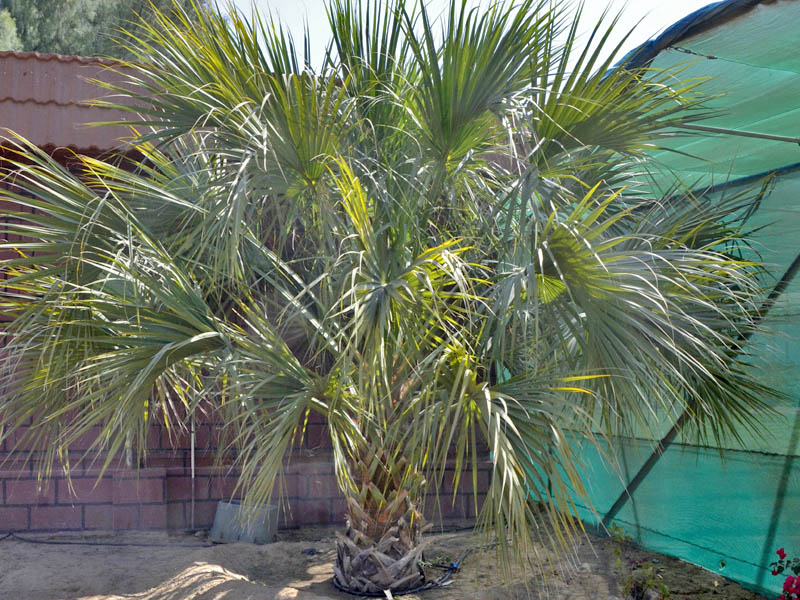
Sabal palmetto, young plant in a nursery in Dubai, United Arab Emirates.
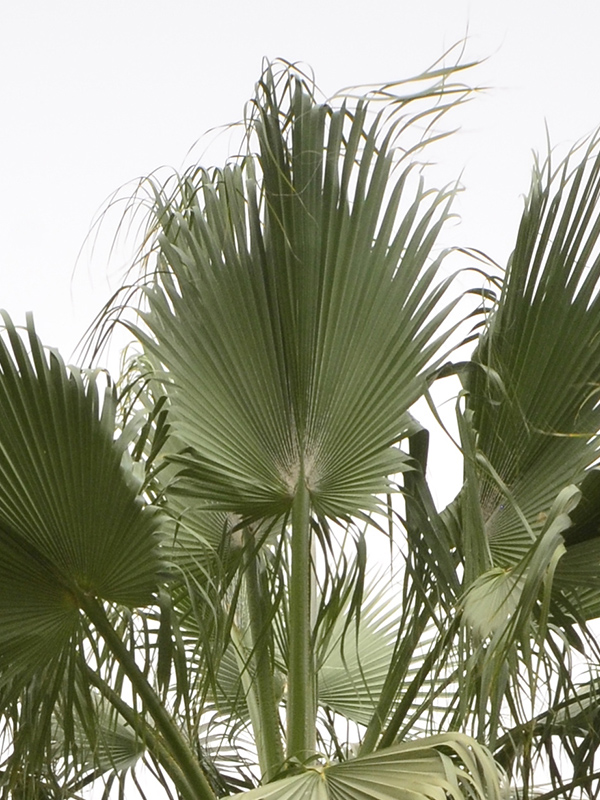
Sabal palmetto, leaf.
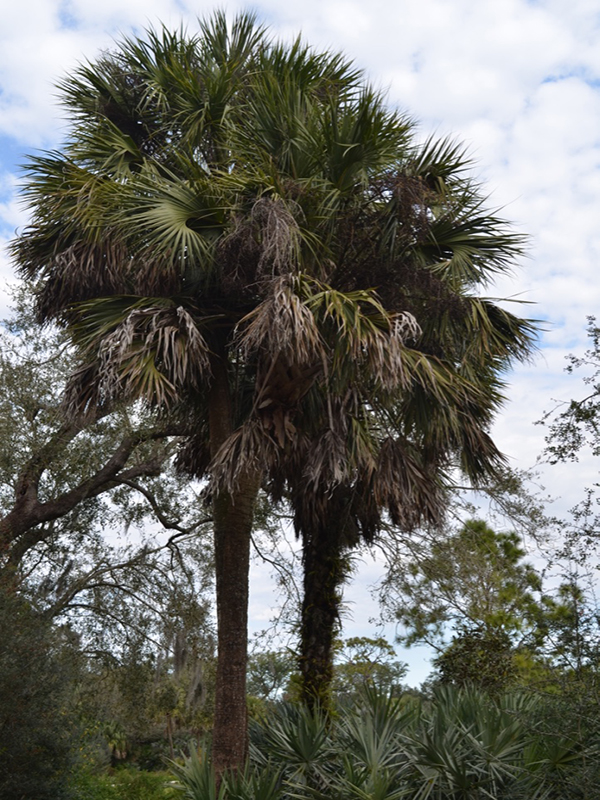
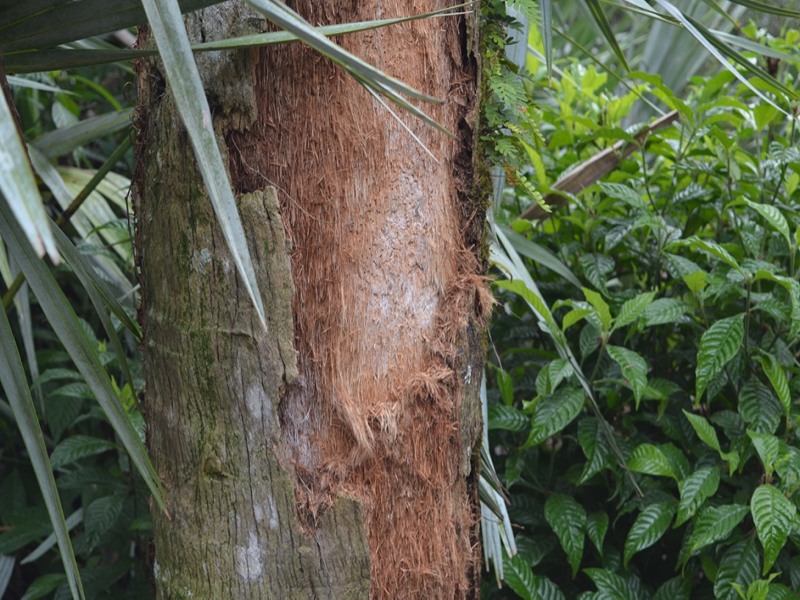
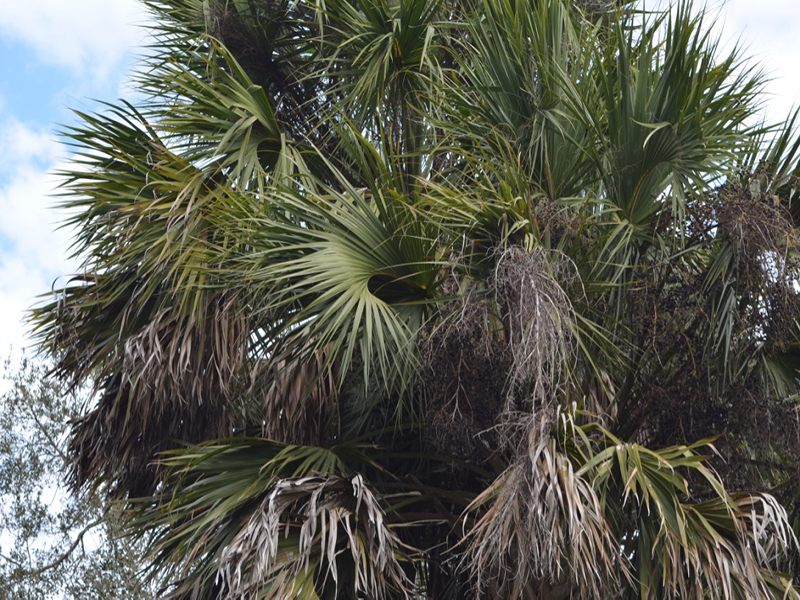
Sabal palmetto, leaf, Dubai, United Arab Emirates.
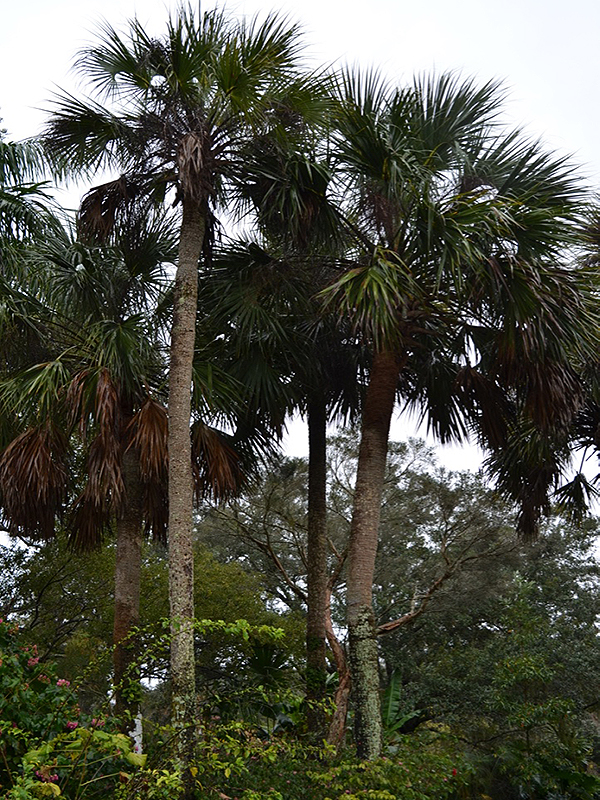
Sabal palmetto, form. Harry P. Leu Gardens, Orlando, Florida, United States of America.
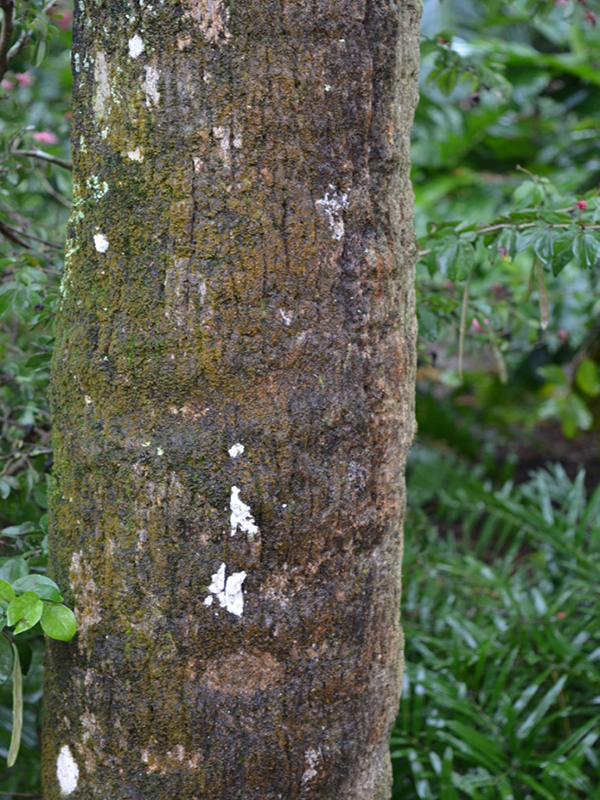
Sabal palmetto, bark. Harry P. Leu Gardens, Orlando, Florida, United States of America.
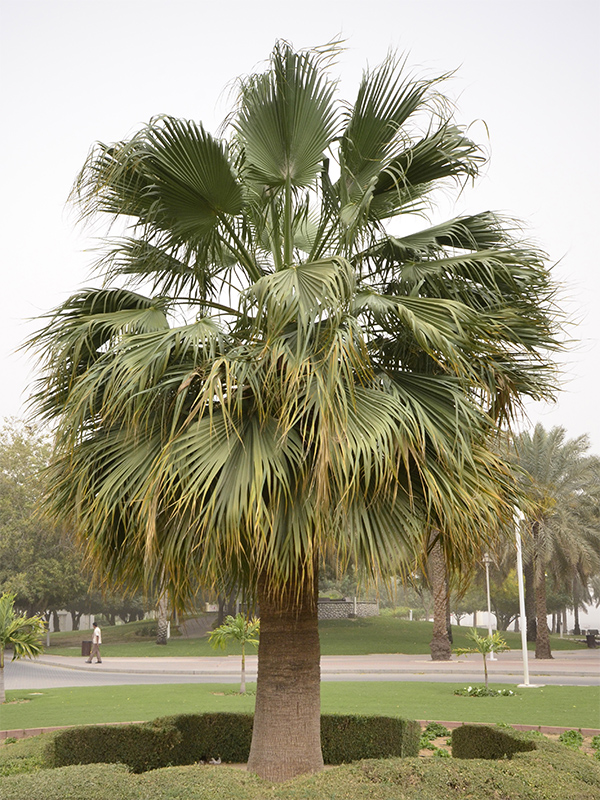
Sabal palmetto, mature form in Dubai, United Arab Emirates.